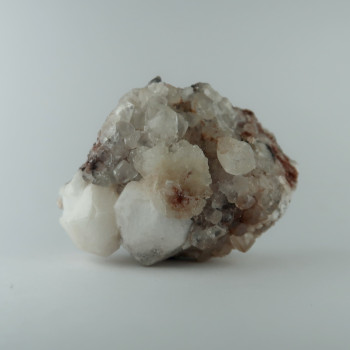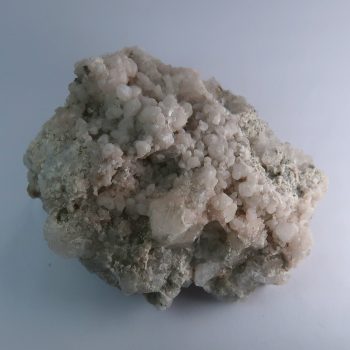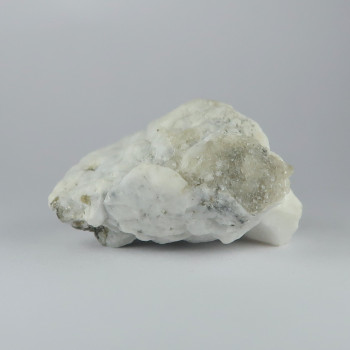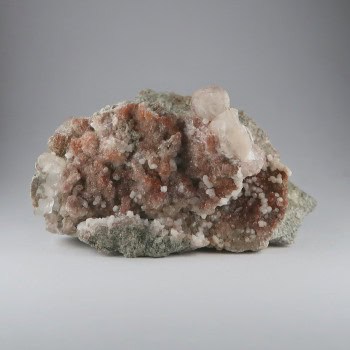Analcime
Analcime tends to occur as well developed crystals in a range of colours, typically in trapezohedrons. It is almost entirely collected for mineral specimens.
Showing all 4 results
-

Analcime and Calcite from Dean Quarry, Cornwall
£10.00 -

Analcime from Croft Quarry, Leicestershire, UK
£6.50 – £7.50 -

Analcime from Mont-Saint-Hilaire, Canada
£7.50 -

Calcite and Analcime from Croft Quarry, UK
£20.00
Appearance
Analcime tends to occur as well developed crystals in a range of colours, typically in trapezohedrons.
Uses and History
Analcime is essentially only used as mineral specimens, it has no use in industry other than analcime-bearing tuffs sometimes being crushed for hardcore.
Alright, lets get the elephant in the room sorted out.
The name analcime comes from the greek ‘analkimos’, meaning ‘weak’ or ‘without force’, as a reference to the weak electrostatic charge that occurs when the mineral is rubbed.
It was first described by the French geologist Déodat de Dolomieu as zéolithe dure, a ‘hard zeolite’, found in lava in Sicily, Italy. It was later renamed to Analcime by the French mineralogist Rene Just Haüy, who is responsible for many student giggles.
Locales
Analcime is a rather wide spread mineral but some excellent locales are listed below.
Africa:
- Brandberg, Namibia
Asia:
- Toura, Siberia, Russia
Europe:
- Croft Quarry, Leicestershire, UK
- Cyclopean Islands, Sicily, Italy
- Trentino, Italy
South America:
Antarctica:
Australia and Oceania:
North America:
- Coleman, Alberta, Canada
- Lake Superior, Michigan, USA
- Poudrette, Quebec, Canada
- Springfield, Oregon, USA
Mineralogy
White, colourless, grey, pink, green, yellow, orangeish.
Hazards and Warnings
Almost all rocks, minerals (and, frankly, almost all other substances on earth) can produce toxic dust when cutting, which can cause serious respiratory conditions including silicosis.
When cutting or polishing rocks, minerals, shells, etc, all work should be done wet to minimise the dust, and a suitable respirator or extraction system should be used.
Translations
Arabic:
Hindi:
Portuguese:
- analcima
Bengali:
Indonesian:
Punjabi:
English:
Italian:
Russian:
- анальцим
French:
Japanese:
- 方沸石
Spanish:
- anacima
German:
- Analcim
Korean:
Thai:
Gujurati:
Mandarin Chinese:
- 方沸石
Urdu:
Further Reading / External Links
- https://en.wikipedia.org/wiki/Analcime
- https://www.mindat.org/min-210.html
- https://www.webmineral.com/data/Analcime.shtml
